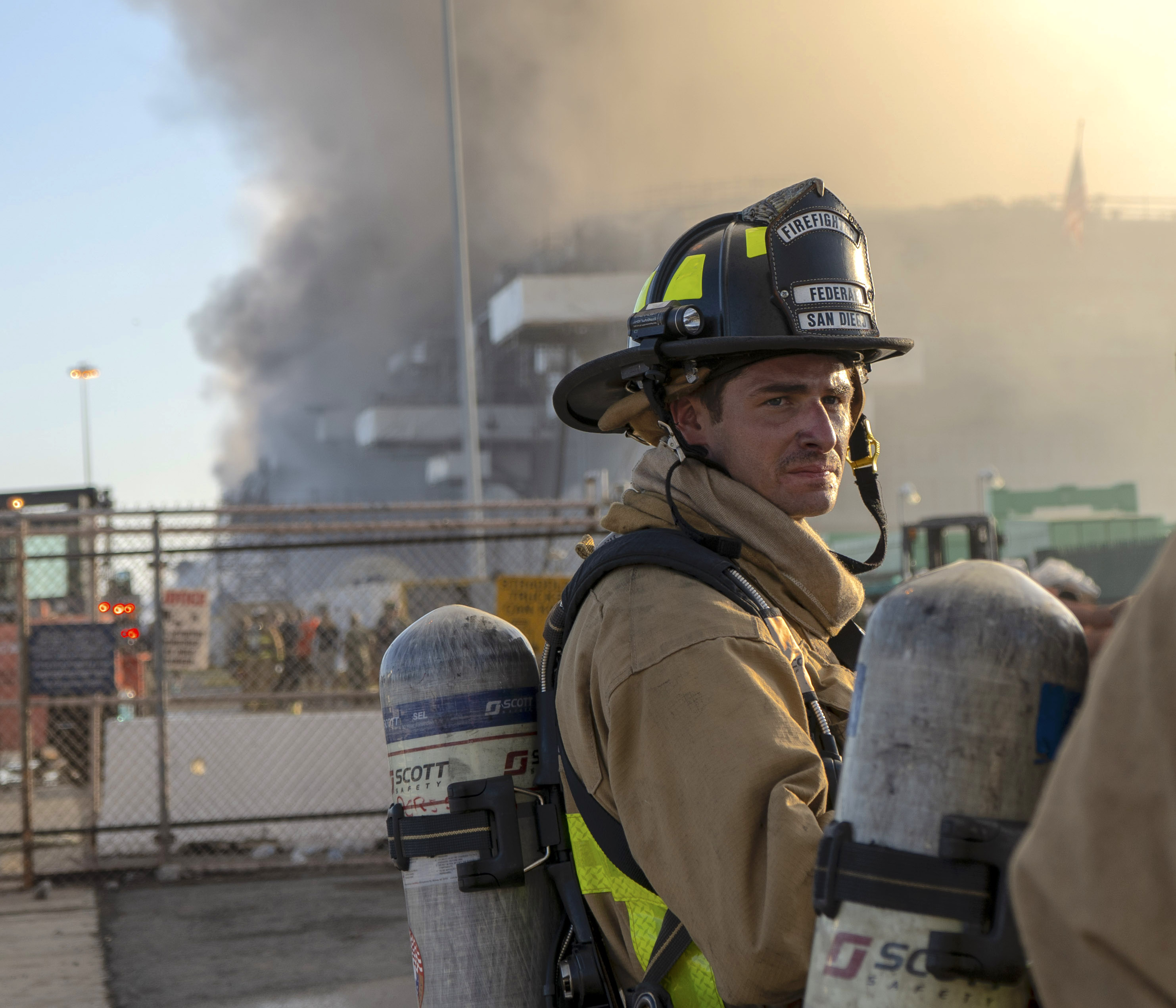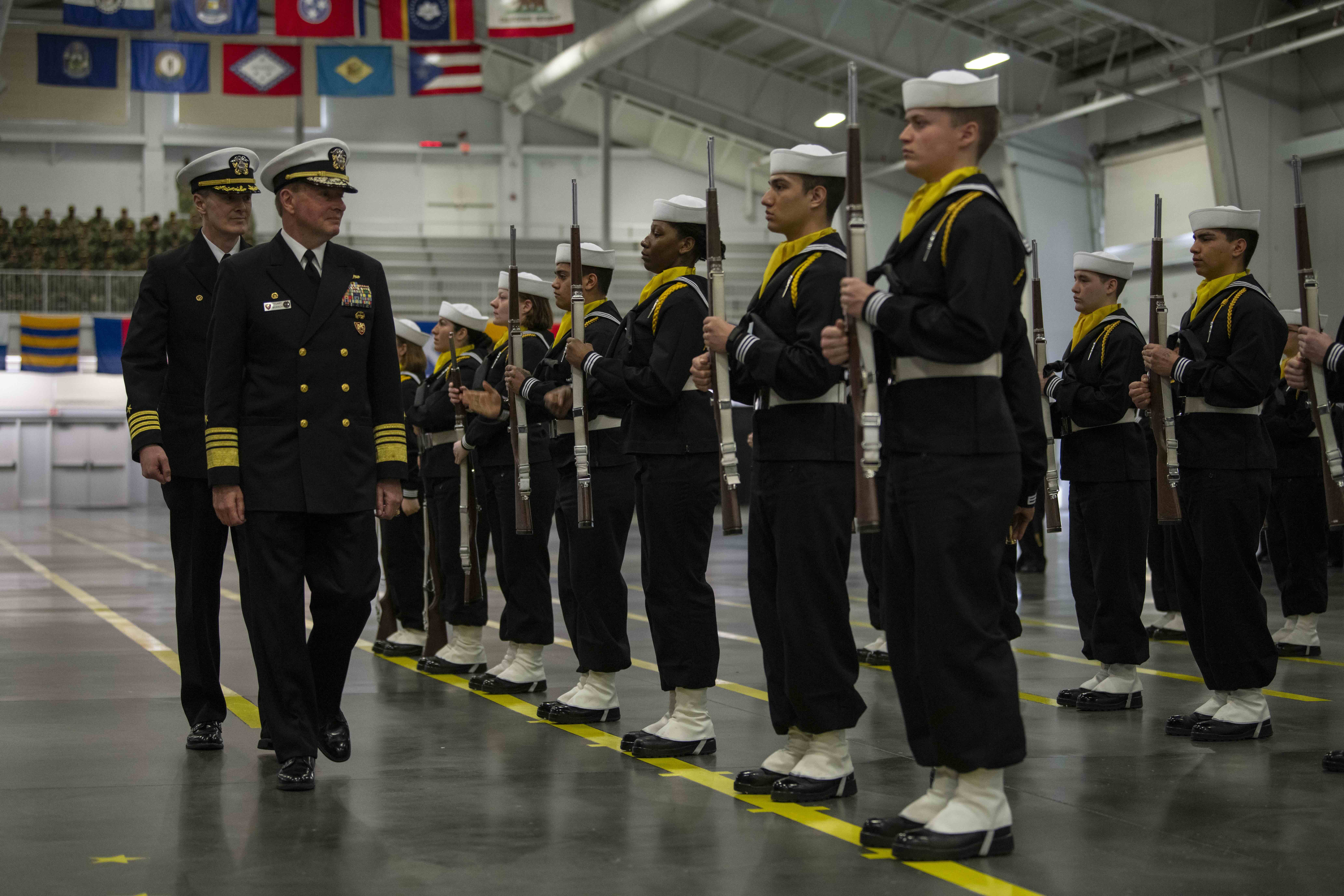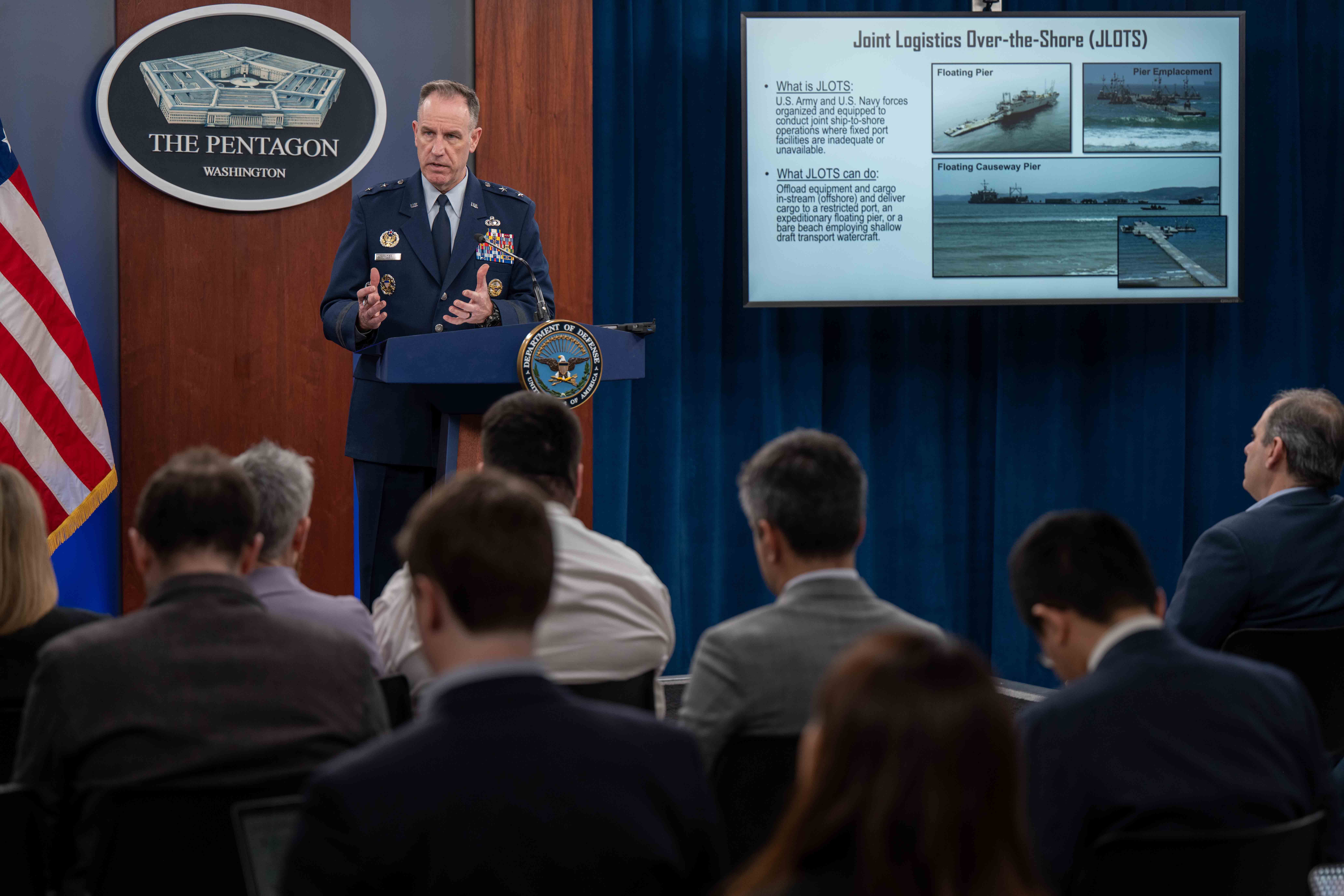
The Navy is revisiting fire safety protocols for maintenance periods, as part of an ongoing conversation following an amphibious assault ship fire over the summer.
Naval Sea Systems Command commander Vice Adm. Bill Galinis said the USS Bonhomme Richard (LHD-6) fire in July reaffirmed some lessons learned after the 2012 USS Miami (SSN-755) fire, including the need for large-scale firefighting drills to acquaint the ship’s crew with shipyard firefighters and nearby local and federal fire crews that would be called in in an emergency. Galinis told reporters in a Nov. 12 Defense Writers Group virtual event that ships must do this kind of large-scale drill within 30 days of starting an industrial availability and then again annually during lengthy maintenance periods.
Galinis said another ongoing safety discussion centers around, “as we go through and execute one of these industrial availabilities, that we don’t take down, we don’t disassemble too many of the fixed firefighting systems at the same time. … We don’t get to a point where there’s no fire protection on the ship. I’m not saying that was the cause or factored into the Bonhomme Richard fire, but it was something that, as we started looking at this, we did notice that in some cases – especially in some of the availabilities that are much more intrusive, where we take more of the ship apart, and sometimes we may get ourselves in a situation where we’re disabling more of the fixed, the installed systems. Now what we typically do to counter that is we will install temporary fire systems onboard the ship, that’s a requirement in any of our contracts. … But invariably we’ll find times where some of those temporary systems may not be as effective as the installed fixed firefighting systems that the ship has.”
Galinis was careful not to suggest any causal factors for the Bonhomme Richard fire ahead of the release of four ongoing investigations, but he said the ongoing conversation about fire safety was largely centering around those two topics.
USNI News reported at the time of the LHD fire that Bonhomme Richard’s fire suppression system “was not operational because it was being worked on in the shipyard,” according to Rear Adm. Philip Sobeck, the Expeditionary Strike Group 3 commander in charge of the West Coast amphibious fleet.
Galinis and NAVSEA are in charge of two of four ongoing investigations following the Bonhomme Richard fire: a failure review board, which will look at safety, structural and design issues related to the ship and how changes could be made to prevent a fire from moving through the hull the way it did on Bonhomme Richard; and a safety investigation board to examine the events that took place on the ship leading up to the fire compared to existing policies and procedures.
Additionally, a Naval Criminal Investigative Service (NCIS) criminal investigation, which now includes the Bureau of Alcohol, Tobacco, Firearms and Explosives (ATF) – is investigating any potential criminal activity related to the outbreak of the fire. Vice Adm. Scott Conn, the commander of U.S. 3rd Fleet, is also leading a command investigation.
USNI News previously reported that the investigations were expected to extend into December but not into 2021.





